Finally, fog is rising from the last of the melting snow and a steady drizzle is bringing the lawn and surrounding woodland back to life. Spring outdoor work will replace the free weekends of winter and save my wife and I from the cabin fever cult of the Instant Pot.
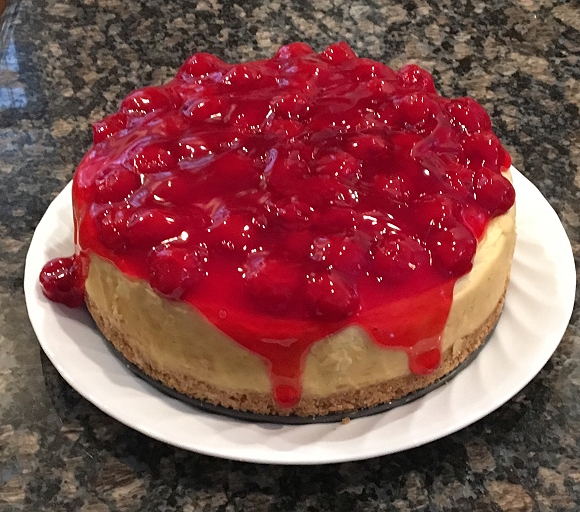
It could have been a flawless, perfectly textured and flavored New York Cheesecake, but I forgot to change the Instant Pot sealing ring to one reserved for baking. Consequently, the cheesecake took on the strong aroma of Asian short ribs. So my wife and I sat across from one another at the table, cheesecake in the middle, two hungry wolves contemplating a porcupine, before giving up and making the cheesecake premium trashcan liner. Fortunately, the short ribs had no such problem.
This little Winchester of mine….
Shooting different types of firearms makes for enjoyable work, as does developing a wide variety of handloads. Some folks like to collect and accumulate firearms, some tend to satisfy an interest in a particular firearm, then sell it and move onto the next. I do fall into the latter category, but I do have a core collection of firearms that I particularly enjoy that cover my applications. One in that collection in a Winchester Model 70 Classic Compact.
The Model 70 Classic Compact has been out of production for some time, but Winchester current production includes a Winchester Model 70 Featherweight Compact and I wanted to investigate the differences.
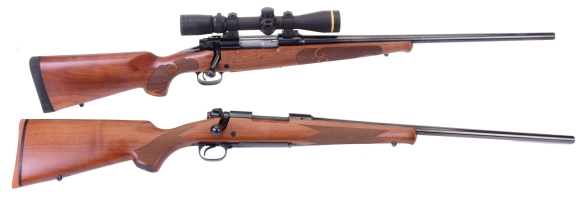
Lower rifle pictured above, the now discontinued Winchester Model 70 Classic Compact in 243 Winchester, purchased in 1998. Above, a current production Winchester Model 70 Featherweight chambered for the 7mm-08 Remington. It is of interest to me because of its greater firepower and its similarity to my Classic Compact.
| Model 70 | Classic Compact | Featherweight Compact |
| Item Number | 535017212 | 535201218 |
| UPC | 048702114717 | 048702002304 |
| Action: | Bolt – Short Action | Bolt – Short Action |
| Caliber | 243 Win | 7mm-08 Rem |
| Barrel Length | 20″ | 20″ |
| Twist Rate | 10″ | 9 1/2″ |
| Magazine Capacity | 4 | 5 |
| Magazine Type | Hinged Floorplate | Hinged Floorplate |
| Barrel/Action Material | Alloy Steel | Alloy Steel |
| Trigger Guard | Aluminum Alloy | Aluminum Alloy |
| Floorplate Material | Alloy Steel | Alloy Steel |
| Length of Pull | 13″ | 13″ |
| Drop at Comb | 9/16″ | 1/2″ |
| Drop at Heel | 3/4″ | 3/4″ |
| Overall Length | 39 1/2″ | 39 1/2″ |
| Weight | 6 lbs 8 oz* | 6 Lbs 8 Oz. |
| MSRP | – |
$1009 |
| *Catalogue 6 Lbs, actual weight 6 Lbs 8 Oz. ** 1998 MSRP |
||
 While the table suggests only minor difference between the two products, there are actually numerous subtle and not so subtle differences between the two guns. Some are model differences, Classic versus Featherweight, however, others are related to design evolution. As a model difference, the current Featherweight is a little taller at the magazine, which allows for a magazine capacity of 5, versus the classic’s 4 round capacity. The featherweight’s comb is 1/16″ higher, and while the pull length is the same for both, the buttstock wood is approximately 1/2″ shorter, offset overall by a 1/2″ thicker Pachmayr Decelerator recoil pad.
While the table suggests only minor difference between the two products, there are actually numerous subtle and not so subtle differences between the two guns. Some are model differences, Classic versus Featherweight, however, others are related to design evolution. As a model difference, the current Featherweight is a little taller at the magazine, which allows for a magazine capacity of 5, versus the classic’s 4 round capacity. The featherweight’s comb is 1/16″ higher, and while the pull length is the same for both, the buttstock wood is approximately 1/2″ shorter, offset overall by a 1/2″ thicker Pachmayr Decelerator recoil pad.

The early model Classic has a conventionally radius crown, where as the current Featherweight has a recessed target crown for improved accuracy and increased protection of the muzzle’s thrust surface. Both have hammer forged, slender contour barrels.
Like the Classic, the Featherweight receiver is machined from a solid steel billet. While the recoil lug as a part of the receiver is a design carry over, the spot glass bedding to assure consistent stock to barreled action fit and reinforcement and Winchester MOA Trigger are not. Both the recoil lug and glass bed neutralize temperature and humidity changes and prevent wood cell compression from altering point of impact. The older Classic has a speed bump in the barrel channel at the forend to provide small patch support of the barrel. The current Featherweight has a full floating barrel.

Winchester’s M.O.A. trigger system is a good one, referred to as having a “Triple Zero Advantage”; zero take up, zero creep and zero overtravel. By increasing the trigger’s mechanical advantage, preloading to eliminate creep and by controlling overtravel, the new trigger has a short, crisp and light pull and is fully adjustable. Adjustable for pull weight in the range of 3 – 5 lbs, they are preset at the factory to 3 3/4 lbs. My old Classic Compact arrived with a 5 1/2 Lbs pull, but was quickly slicked up to 3 1/2 Lbs.
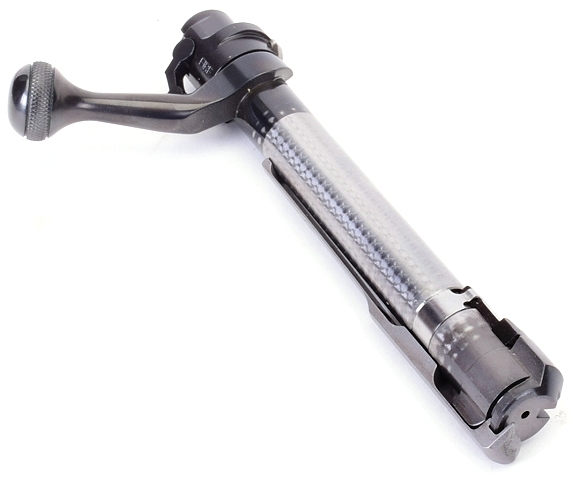
Like the Classic, the current Winchester Model 70 Featherweight has a one piece bolt and non rotating claw extractor for controlled round feed. The three position safety locks the bolt, or permits cycling while on safe when not in the fire position. The blade ejector puts force of ejection in the hands of the shooter, which is not a minor feature. For the handloader, or basically anyone shooting at a public range, it means not losing brass, and not bouncing empties off the guy at the next shooting bench.

The bottom metal, as on the Classic, is… tidy and does not get in the way when shooting. The magazine box is steel, as is the actual floorplate and floorplate latch. The trigger guard and floorplate frame are aluminum alloy. I am sure the use of aluminum reduces weight and has more than enough structure and the release at the rear of the floorplate is positive, but I changed mine out for all steel pieces because I felt it was consistent with the overall rifle quality. The same applies to the shiny plastic grip cap that is a component on both. Yes, I am bring very picky, but I would like to see a blued steel trigger guard and grip cap.
Live fire…
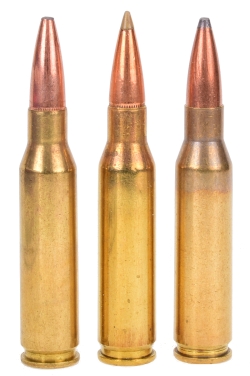 The7mm-08 Remington, under one name or another, has been with us since 1958. First as the 7mm/.308 wildcat and then as the SAAMI homologated 7mm-08 Remington. 7mm cartridges have high sectional density and ballistic coefficient going for them. Subsequently, they have high velocity retention and momentum to the extent the 140 grain 7mm-08 Rem outperforms the 150 grain 308 Winchester downrange. The 7mm-08 Remington is another of the 243 Winchester, the 260 Remington, the 338 Federal, and 358 Winchester as a 308 Winchester derivative cartridge.
The7mm-08 Remington, under one name or another, has been with us since 1958. First as the 7mm/.308 wildcat and then as the SAAMI homologated 7mm-08 Remington. 7mm cartridges have high sectional density and ballistic coefficient going for them. Subsequently, they have high velocity retention and momentum to the extent the 140 grain 7mm-08 Rem outperforms the 150 grain 308 Winchester downrange. The 7mm-08 Remington is another of the 243 Winchester, the 260 Remington, the 338 Federal, and 358 Winchester as a 308 Winchester derivative cartridge.
Where the choices were once 120 grain and 140 grain factory loads, 150 grain and 160 grain are now common place. Even that is curious as the 7×57 Mauser operating at lower pressures are routinely loaded up to 175 grains. Handloaders have bullet choices between 115 grains and 197 grains; 113 weights/types from 16 bullet manufacturers.
In this case, three types of factory ammunition were shot to get a sense of the Winchester Featherweigh’s accuracy and 20″ barrel generated exterior ballistics.
| Cartridge | Bullet Type |
Bullet Weight Grains |
Rated FPS 24″ BBL |
Chrono MV FPS |
100 Yard 3 Shot Group” |
| Hornady SST Superformance | Poly Tip | 139 | 2950 | 2770 | 0.9 |
| Remington AccuTip | Poly Tip | 140 | 2860 | 2764 | 0.5 |
| Federal Fusion | PT | 140 | 2850 | 2648 | 0.7 |
The 7mm-08 Rem is an easy shooting cartridge in terms of recoil and accuracy. Short barrel report is noticeably louder than 22″ and 24″ barrel rifles, which is to be expected. The 20″ barrel has a bullet exiting pressure of approximately 14,000 psi, while a 24″ barrel has a muzzle pressure of approximately 10,000 psi, or 40% less. Cycling the bolt, chambering a round or extracting an empty was smooth and required little effort.
In closing…
Overall, the current Winchester Model 70 Featherweight Compact is a very slick little rifle. Both wood and metal finishes are exceptional, wood and metal parts have a quality fit and the Model 70 action is slick in operation. This rifle would make a terrific first centerfire rifle for a young shooter, or anyone of any gender or age who doesn’t want to haul a ten pound piece of wood and metal around woodland hills.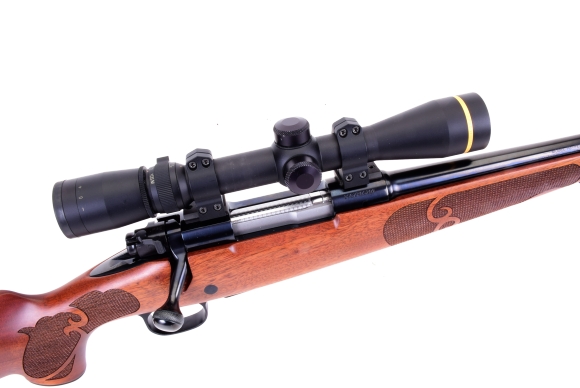

Email Notification